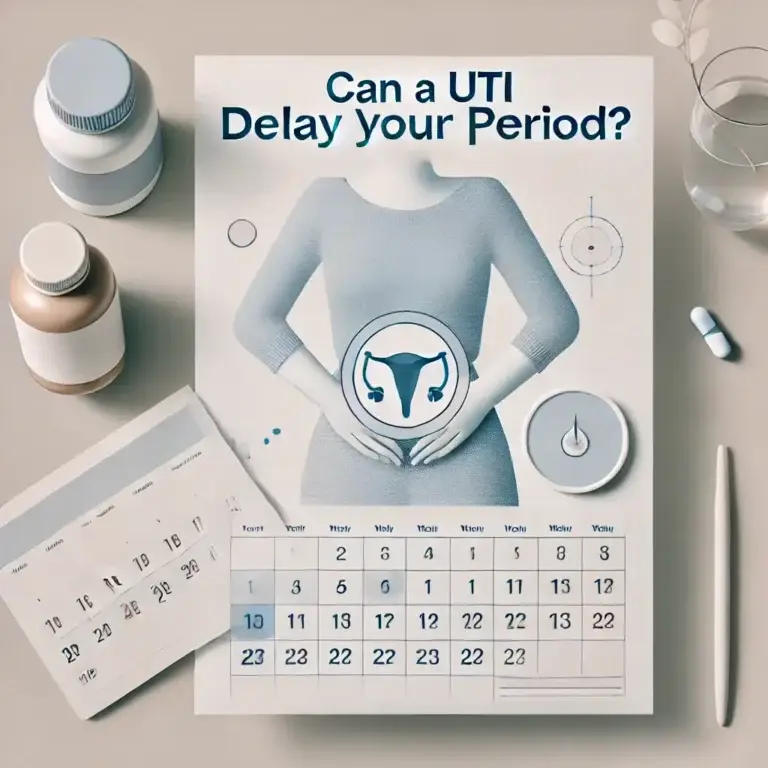Noticing changes in your body can be both intriguing and confusing. For many women, distinguishing between pre-period discharge and early pregnancy symptoms can be challenging. While they might seem similar at first glance, these subtle signs can carry different meanings for your health and pregnancy journey. Understanding the key differences can help you gain clarity and take the next step with confidence.
This article explains discharge before period vs early pregnancy signs to help you better understand your body’s signals. Let’s read on and understand!
Discharge Before Period vs Early Pregnancy: Key Differences
You can understand the difference between these two signs by looking at their characteristics given below:
Characteristics of Pre-Period Discharge
- Consistency: It is usually thick, white, and creamy
- Timing: The discharge before periods appears 1-2 weeks before menstrual period
- Duration: Pre-period discharge typically lasts until menstruation begins
- Additional symptoms: The discharge you encounter before periods are often accompanied by menstrual cramps and breast tenderness
Early Pregnancy Discharge Signs
- Consistency: Thin, milky white, mild-smelling
- Timing: Begins shortly after implantation of fertilized egg
- Duration: Continues throughout pregnancy
- Associated symptoms: Light cramping, fatigue, and breast changes
Types of Cramps: Menstrual vs Pregnancy & How they Differ
How Early Pregnancy Cramps Feel
Implantation cramping differs from menstrual cramps in several ways:
- Location: Felt in the Lower abdomen and back
- Intensity: Usually milder than period cramps
- Duration: Typically brief, lasting 1-3 days
- Timing: Occurs 6-12 days after ovulation
Menstrual Cramps Characteristics
- Location: Lower abdomen, sometimes radiating to the lower back
- Intensity: Can range from mild to severe
- Duration: Often lasts throughout your menstrual period
- Timing: Begins just before or during menstruation
Symptoms of Early Pregnancy vs PMS
Early Pregnancy Signs
- Increased vaginal discharge
- Light spotting from implantation bleeding
- Mild cramping as uterus expands
- Breast tenderness and swelling
- Fatigue and nausea
Pre-Period Symptoms
- Cyclical breast pain
- Mood changes
- Bloating
- Traditional menstrual cramps
- Changes in discharge consistency
Here’s a quick table summarizing the key differences:
|
Symptom |
Early Pregnancy | PMS |
|
Discharge |
Increased, thin, milky white | Thick, creamy |
|
Cramping |
Light, brief (1-3 days) |
Intense, lasting several days |
|
Breast Sensitivity |
Tenderness, swelling |
Cyclical breast pain |
|
Mood Changes |
Emotional, fatigue |
Irritability, mood swings |
| Bloating |
Mild |
Often severe |
When to Take a Pregnancy Test
If you suspect pregnancy, timing is everything for accurate results:
- Best Time: After a missed period
- Test Accuracy: Most tests detect pregnancy 1-2 weeks after conception
- Pro Tip: Morning tests are most reliable due to concentrated urine
Factors that may affect test accuracy include hydration levels, medication, or test sensitivity.
Managing Symptoms: Care Tips for Each Scenario
Pre-Period Symptoms Relief
- Take over-the-counter pain relievers for cramps
- Use heat therapy to soothe discomfort
- Practice regular exercise to reduce bloating
- Stay hydrated and eat balanced meals
- Manage stress through mindfulness techniques
Early Pregnancy Care
- Start prenatal vitamins early
- Get plenty of rest and hydrate regularly
- Avoid heavy lifting and certain medications
- Schedule an appointment with a healthcare provider
When to Seek Medical Advice
Reach out to a healthcare professional if:
- You experience severe or persistent cramping
- Heavy bleeding occurs, unlike typical spotting
- Heavy bleeding occurs, unlike typical spotting
- You notice unusual discharge with a strong odor or strange color
- Pregnancy test results are unclear
Conclusion: Reassurance for Every Woman’s Journey
Understanding discharge before period vs early pregnancy symptoms helps women make informed decisions about their reproductive health. While some signs overlap, key differences in timing, consistency, and associated symptoms can provide valuable insights. Always consult healthcare professionals for definitive diagnosis and appropriate care recommendations.
Remember that every woman’s experience is unique, and what’s normal for one may differ for another. Trust your body’s signals and seek medical guidance when uncertain about your symptoms.
FAQs
How do I know if my discharge is pregnant or period?
Pregnancy discharge is typically thick, creamy, or milky white without odor, while period discharge is usually brown or pink and may have a mild metallic smell.
How do I know if my period is coming or pregnant?
Early pregnancy signs include missed period, nausea, and tender breasts, while pre-period symptoms include cramps, mood changes, and breast tenderness – timing and pregnancy test provide clearest distinction.
Are early pregnancy and pre-period discharge the same?
While both can be white and creamy, pregnancy discharge is typically thicker, doesn’t change color, and continues consistently, whereas pre-period discharge varies in consistency and may become brown/pink closer to menstruation.
How many days before period pregnancy discharge start?
Pregnancy discharge (leukorrhea) typically starts around 1-2 weeks after conception, which is about 2 weeks before your missed period would occur.


